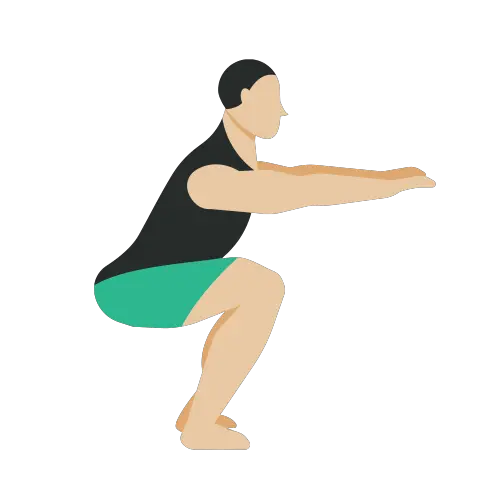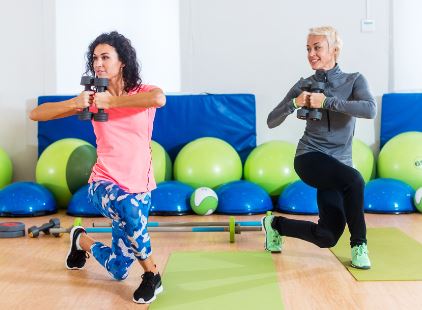Curtsy squats are a dynamic lower body exercise that targets multiple muscle groups, including the glutes, quadriceps, hamstrings, and inner thighs. This exercise involves stepping one leg behind the other in a diagonal motion, mimicking the movement of a curtsy. By incorporating curtsy squats into your workout routine, you can strengthen and tone your lower body while also improving balance, stability, and flexibility. Additionally, curtsy squats can help enhance hip mobility and functional strength, making them a valuable addition to any fitness regimen. Whether you’re a beginner or an experienced fitness enthusiast, adding curtsy squats to your exercise routine can help you achieve your fitness goals and maintain overall health and well-being.
Yes, beginners can start with bodyweight curtsy squats and gradually add resistance as they build strength and confidence.
The Basics of Curtsy Squats
Let’s learn basics of curtsy squats and it’s variations. Watch the below step-by-step video for it.
How to Do Curtsy Squats
- Stand with your feet hip-width apart.
- Step your right foot diagonally behind your left leg, crossing it behind you.
- Lower your body down into a squat position, keeping your chest up and your core engaged.
- Push through your left heel to return to the starting position.
- Repeat on the other side by stepping your left foot diagonally behind your right leg.
Benefits of Curtsy Squat Exercise
- Targeted Muscle Engagement: Curtsy squats primarily work the glutes, quadriceps, hamstrings, and inner thighs.
- Improved Balance and Coordination: The diagonal movement pattern challenges your stability and helps enhance balance.
- Functional Strength: This exercise mimics real-life movements, making it beneficial for daily activities and sports performance.
- Versatility: Curtsy squats can be modified in various ways to increase or decrease intensity, making them suitable for all fitness levels.
Yes, curtsy squats require hip mobility and flexibility, making them an excellent exercise for improving range of motion in the hips.
Yes, you can add weights such as dumbbells or kettlebells to increase the intensity of curtsy squats and further challenge your muscles.
Variations of Curtsy Squats
1. Weighted Curtsy Squats
- To do curtsy squats with weight, hold dumbbells or a kettlebell at chest level or by your sides to add resistance and increase the challenge.
2. Pulse Curtsy Squats
- Perform small pulses at the bottom of the squat to keep the muscles engaged and intensify the burn.
3. Jumping Curtsy Squats
- Add a plyometric element by jumping explosively between each curtsy squat repetition to boost power and calorie burn.
Incorporating Curtsy Squats Into Your Routine
- Aim to include curtsy squats in your lower body workout routine 2-3 times per week.
- Start with 2-3 sets of 10-12 repetitions, gradually increasing the intensity as you become stronger.
- Combine curtsy squats with other lower body exercises like lunges, squats, and deadlifts for a well-rounded leg workout.
Aim to incorporate curtsy squats into your workout routine 2-3 times per week, allowing for adequate rest and recovery between sessions.
If you experience knee pain, try modifying the depth of the squat or reducing the range of motion. Consult with a healthcare professional if pain persists.
To Conclude Curtsy Squats
Curtsy squats are a dynamic and effective exercise for sculpting your lower body muscles and improving overall strength and balance. Incorporate them into your workout routine for functional fitness and noticeable results. Also learn other forms like cable squat, dragon squat, and pistol squat.
By integrating variations and proper form, you can maximize the benefits of curtsy squats and take your fitness journey to the next level. Start today and feel the burn!
Remember, consistency is key to achieving your fitness goals. Keep pushing yourself, and you’ll see progress over time.

